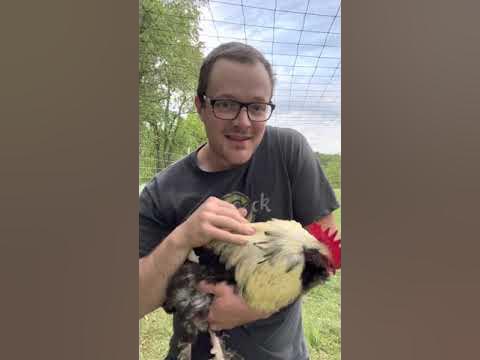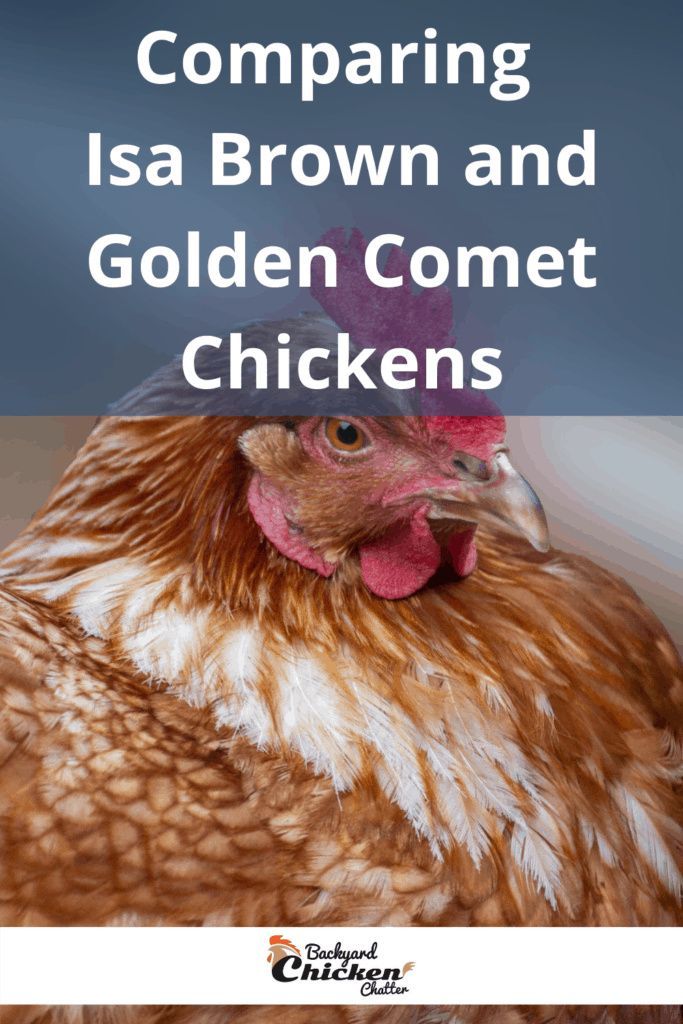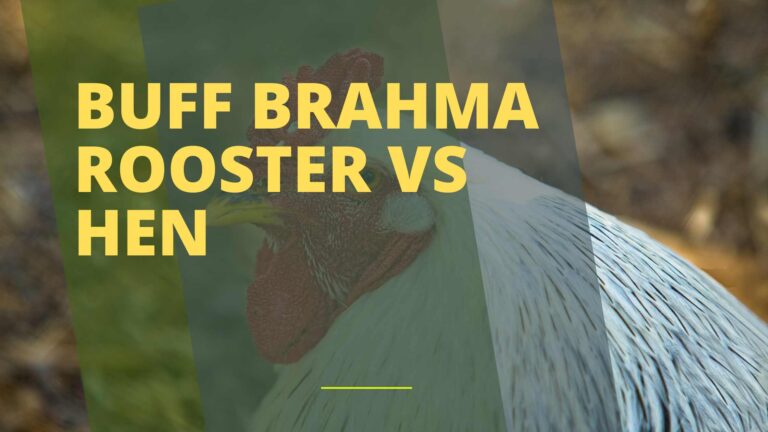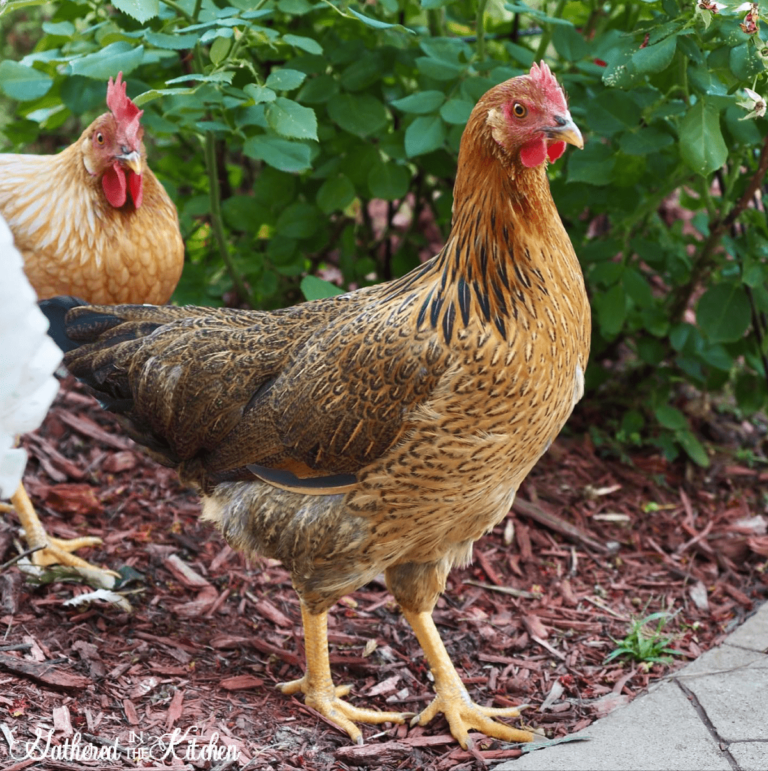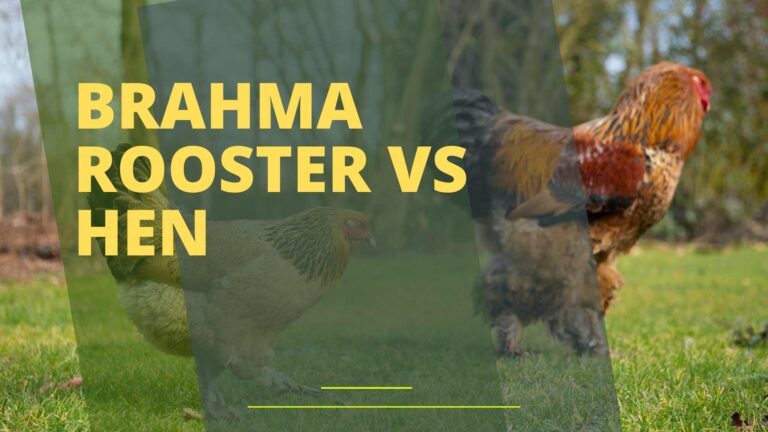A Salmon Faverolle rooster boasts prominent large wattles and a more pronounced beard than the hen. Hens are lighter with a creamier plumage and smaller wattles.
Salmon Faverolle chickens exhibit distinct sexual dimorphism, making it relatively straightforward to distinguish between roosters and hens. This breed, originally from France, is prized for both its ornamental qualities and its dual-purpose utility, excelling in egg production and meat quality.
Hens are esteemed for their consistent laying, especially notable during the winter months. Roosters carry a regal appearance with a vibrant combination of colors including, brown, black, and straw, while hens have a softer feather pattern, displaying a delicate balance of white and salmon shades. Known for their gentle and friendly demeanor, Salmon Faverolles make excellent backyard chickens, integrating well into mixed flocks and endearing themselves to their keepers. The breed’s unique five-toed feet, feathered legs, and muffed face give it an undeniable charm that appeals to poultry enthusiasts worldwide.

Credit: chickenexperts.com
The Salmon Faverolle Breed
The Salmon Faverolle is a remarkable breed of chicken. Known for its distinctive plumage and friendly nature, this breed stands out in the poultry world. Whether you are a seasoned chicken enthusiast or a newcomer to backyard farming, understanding the differences between the Salmon Faverolle rooster and hen can add to the enjoyment of raising these birds.
Origins And History
The Salmon Faverolle is a French breed with a rich history. Originating in the 19th century, these birds were bred in the village of Faverolles. The breed was a staple for French farmers, known for both their eggs and meat. Today, they are a favorite among poultry hobbyists.
Physical Characteristics
With a fluffy beard and feathered legs, Salmon Faverolles are quite unique. The roosters are larger with colorful plumage, boasting bright feathers in shades of salmon, brown, and black. Hens are more subdued, with creamy feathers and a salmon-colored breast. Both genders feature five toes, a trait not common to all chicken breeds.
Breed Popularity
Salmon Faverolles enjoy a loyal following due to their calm demeanor and attractive appearance. They are excellent backyard chickens because of their adaptability and the fact that they handle confinement well. Their friendly nature makes them a hit with families, while their dual-purpose status appeals to small-scale farmers.
Identifying Roosters And Hens
Ever wondered about the differences between Salmon Faverolle roosters and hens? It’s essential for backyard farmers and chicken enthusiasts. Let’s dive into the world of this beautiful poultry breed. With an eye for detail and a bit of knowledge, anyone can distinguish between the two.
Plumage Differences
Salmon Faverolle roosters and hens display unique feathers. Roosters boast brilliant plumage with iridescent black and straw-colored hackles. They also have red points at the wing tips called ‘saddles’.
Hens wear a softer, more subtle feather suit. Their feathers mix white, buff, and salmon shades. They look like they’re wearing a fluffy feather dress, perfect for strutting around the coop.
Behavioral Traits
- Roosters often show dominance and protect the flock with vigor. They strut confidently, keeping an eye out for threats.
- Hens exhibit nurturing behaviors, focusing on foraging and caring for chicks. They move with purpose but exude calmness compared to their male counterparts.
Vocalizations
Listening to their calls reveals clues about their gender. Roosters crow, a loud and clear call asserting their territory. It’s a powerful, unmistakable sound. Hens cluck, a softer, repetitive sound. They use it to communicate with chicks and other hens. It’s like a gentle conversation in the barnyard.
Size And Weight Comparison
Discover the distinct physical traits of Salmon Faverolle poultry. Understand the size and weight differences between males and females. This insight helps in proper caregiving and breeding choices for poultry enthusiasts.
Rooster’s Physical Stature
Salmon Faverolle roosters impress with their size. Weighing heavily on garden scales, these males showcase dominance in the coop. Let’s delve into the specifics:
- Taller: Roosters stand proud and tall, easily towering over hens.
- Broader Shoulders: Their broad shoulders add to their striking figure.
- Heavier: On average, they carry more weight than their female counterparts.
| Rooster | Weight Range |
|---|---|
| Adult | 8-10 lbs (3.6-4.5 kg) |
Hen’s Body Composition
Hens possess a lighter and more refined build. They are nurturers by nature, and their physique is optimized for egg-laying and agility. Key points include:
- Shorter Stance: Hens are more petite, which suits their maternal duties.
- Slender Frame: Sleekness allows for ease in nest-building and foraging.
- Lighter Weight: Ideal for optimal egg production, hens weigh less.
| Hen | Weight Range |
|---|---|
| Adult | 6-7 lbs (2.7-3.2 kg) |
Both roosters and hens bring unique attributes to the flock. A balanced mix ensures a harmonious and productive coop.
Color Patterns And Variations
Color Patterns and Variations stand out as a signature trait for the Salmon Faverolle breed. These birds flaunt a unique plumage that’s not only beautiful but also distinctive to their gender. Understanding the colorful elegance of these chickens can help breeders and enthusiasts alike appreciate the visual appeal of the Salmon Faverolle. Let’s delve into the specific feathering differences between the rooster and hen.
Rooster Feathering
The Salmon Faverolle Rooster is a spectacle of colors. His majestic plumage features a blend that catches the eye and holds attention:
- Beard and Muffs: Beacons of silvery white
- Back: Gleams in bronzy green
- Saddle Feathers: Long, black with a lustrous sheen
- Tail: Dark, iridescent black
- Wings: Tinged with brown and black
- Breast: Salmon color, the breed’s namesake
Hen Coloration
Salmon Faverolle Hens boast a subtle yet impressive color scheme:
- Neck: Honeyed salmon, softly blending down
- Back: White with salmon overlay
- Wings: Primarily white with hints of color
- Tail: Mainly black, with a soft white underlay
- Breast: Creamy white, perfectly complementing the salmon hues
Their gentle color contrast provides a distinct difference from the roosters but holds its own in beauty.
Personality And Temperament
The Salmon Faverolle is a breed full of charms. Both roosters and hens have distinct personalities. Understanding these can help in managing your flock. Let us dive into the world of Salmon Faverolle chickens, comparing the rooster’s disposition with the hen’s behavior.
Salmon Faverolle roosters stand out with their bold, striking look. Their personality traits are equally captivating:
- Protective: They watch over their hens with vigilance.
- Docile: Despite their size, they’re gentle giants at heart.
- Sociable: They enjoy human interaction, often seeking attention.
Notably, these roosters may crow less than other breeds. This can be a plus for those in noise-sensitive locations.
Hen personalities slightly differ from roosters, yet they too have traits worth praising:
- Amiable: Hens are known for getting along well with others.
- Broody: They have strong maternal instincts, often sitting on eggs.
- Good Layers: They produce a satisfying number of eggs each year.
These hens adapt well to confinement but also flourish when they can forage.
Egg Production And Fertility
When exploring the world of Salmon Faverolle chickens, understanding egg production and fertility is key. These French birds, known for their unique color and gentle nature, differentiate in roles between the hens and roosters. Let’s delve into the capabilities of hens in laying eggs and the influence of roosters on fertility.
Hen’s Laying Capabilities
Salmon Faverolle hens are prolific egg layers. They typically start at about 5 to 6 months old. Noted for their consistency, they can produce 3 to 4 eggs per week, translating to around 150 to 200 eggs annually. The eggs are a cream to light brown shade and are of a medium to large size.
- Early to start laying: Begins at 5-6 months
- Steady egg production: 3-4 eggs/week
- Annual count: Approximately 150-200 eggs
- Size and color: Medium to large, cream to light brown eggs
Rooster’s Role In Fertility
Salmon Faverolle roosters are key to ensuring the fertility of eggs. While roosters do not lay eggs, their presence is crucial for hatching chicks. A single rooster can manage a flock of hens, playing a major part in breeding programs. Their amiable nature ensures a harmonious coop.
| Aspect | Details |
|---|---|
| Contribution to fertility | Essential for hatching eggs |
| Flock management | Can oversee multiple hens |
| Presence in the coop | Helps maintain balance and order |
| Nature | Friendly and non-aggressive |
Caring For Salmon Faverolles
Salmon Faverolles chickens, known for their fluffy feathers and friendly nature, make great additions to your backyard flock. Reflecting a heritage that combines utility with beauty, these birds deserve dedicated care to maintain their distinctive salmon-colored plumage and charming personalities. Whether you own a regal rooster or a heartwarming hen, understanding their needs is key.
Nutritional Needs
A balanced diet keeps Salmon Faverolles happy and healthy. Start with a mix of protein-rich feed and grains.
- Starter feed: Young chicks require feed with 18-20% protein.
- Layer pellets: Hens benefit from 16% protein for egg production.
- Scratch grains: Offer as a treat, not more than 10% of total diet.
- Fresh greens and fruits can supplement their diet.
Ensure constant access to clean water; vital for their well-being.
Health And Wellness
Salmon Faverolles thrive with regular health checks and preventive measures.
| Checklist Item | Action |
|---|---|
| Feather condition | Inspect for parasites, provide dust baths. |
| Respiratory health | Watch for sneezing, ensure good ventilation. |
| Leg strength | Check for limping, provide space for exercise. |
| Vaccinations | Follow local vet guidelines. |
Vet guidance varies; check local resources.
Habitat Requirements
These birds need secure and spacious coops. Key features to consider include:
- Space: At least 4 square feet per bird inside, 8 square feet outside.
- Protection from predators and harsh weather is essential.
- Adequate ventilation prevents respiratory issues.
- Soft bedding, such as straw or wood shavings, for comfort and cleanliness.
- Nesting boxes for hens, one per every 3-4 hens.
Regular coop cleaning prevents diseases and keeps your Faverolles content.
Credit: www.backyardchickens.com
Choosing Between Rooster And Hen
Are you thinking of adding a Salmon Faverolle to your flock? This charming breed, known for their feathered feet and sweet disposition, comes in both rooster and hen varieties, each bringing its own flair to the coop. But which one should you choose? When it comes to deciding between a Salmon Faverolle rooster or hen, consider your space, flock makeup, and purpose for keeping these birds. Let’s dive into what sets them apart, ensuring you make the right choice for your backyard farm.
Space Considerations
Both roosters and hens need room to roam, but roosters may require more space. This is essential to prevent territorial disputes.
- Hens are generally smaller and can manage in more compact areas.
- Roosters need room to assert dominance and may become aggressive if cramped.
| Chicken Type | Minimum Space Requirements |
|---|---|
| Hen | 3-4 square feet per bird indoors |
| Rooster | 8-10 square feet per bird indoors |
Flock Dynamics
Flock peace is vital, and whether you choose a rooster or hen will impact this harmony. Roosters can protect a flock, but they might also cause stress.
- Hens often get along well and can form tight-knit groups.
- Roosters may fight if multiple males are present, unless they have plenty of space and hens.
Purpose Of Keeping
Consider what you want from your Salmon Faverolle. Is it eggs, companionship, or perhaps show quality?
- Egg production: Hens are the clear winners, with a steady supply of eggs.
- Companionship: Both roosters and hens can be friendly, but hens may be less aggressive.
- Exhibition: Roosters boast impressive plumage that might shine in shows.

Credit: www.reddit.com
Conclusion
Distinguishing between the Salmon Faverolle rooster and hen is straightforward. Each exhibits unique traits, from plumage to temperament. Whether you’re a seasoned breeder or a backyard enthusiast, understanding these differences is key. Choose wisely for a harmonious coop. Your pick shapes the flock’s dynamic.

